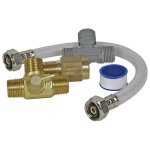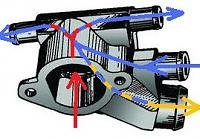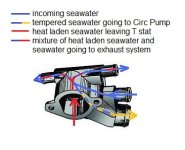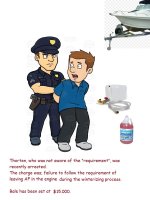Ricardo, Both Volvo Penta and MerCruiser require that their engines be stored full of the correct antifreeze. They don't think it's optional or a good idea. It is required.
Required is a strong word. I believe that it's more of a recommendation or suggestion!
They don't want you to drain it out. In fact they require that you leave the complete system full.
Again, it is a recommendation or suggestion, and it would be just fine if (key word "if") the AF has not become diluted!
Muffs are a convenient way to get the system full.
One must first understand the raw water cooled engine's T-stat housing and the by-pass porting within it.
For these guys who are Hell Bent on doing this, I suggest buying my 55 gallon winterizing kit.
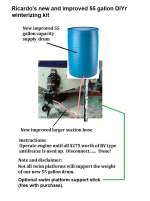
If you drain the system first and use the correct antifreeze there is no worry about residual water. The very small amount left will mix.
Understood.
All current Volvo engines are fresh water cooled blocks,
I assume that you mean Closed Cooling Systems.
but not the expensive catalyst exhaust manifolds. MerCruiser 4.5L and 6.2L are aluminum blocks and FWC is an option. Most are sold raw water cooled. And the FWC option only does the block. Once again the expensive catalyst exhaust manifolds are raw water cooled.
Also MerCruiser no longer calls it the single point drain system, they now market as "Season Extender" .
Basically the same thing...... correct?
I'm guessing they found that there's too much misinformation floating around the internet about how to properly maintain their engines?
I'm sure that they did....especially in some of the YouTube videos.
In my opinion, the Camco and "like" kits fall into that category.
I'll be the first to admit that I don't know much about saltwater and it's effects on raw water cooled engines, but I do know that here in Minnesota. If you store the engine full of the proper antifreeze,
there are no rust flakes to clog the system.
Ok..... that leads me to a question; where are the rust flakes coming from in an Aluminum cylinder block that you have now alluded to?
Maybe has something to do with needing the presence of oxygen to rust iron?
Correct! Rust is basically Iron Oxide. Oxygen needs to be present.
Deionized water or distilled water is still preferred with propylene glycol (PG) antifreeze just as much as with ethylene glycol.
Volvo Penta and MerCruiser spend a lot of money on testing and engineering. They do like to sell parts, but they also want people to be happy with their products.
Understood!
This is why they
recommend people properly maintain their products. Things like changing oil and filters ------- and storing their engines full of the correct antifreeze. Proper maintenance is cheaper in the long run.
I like seeing how you changed this to read "recommend".


